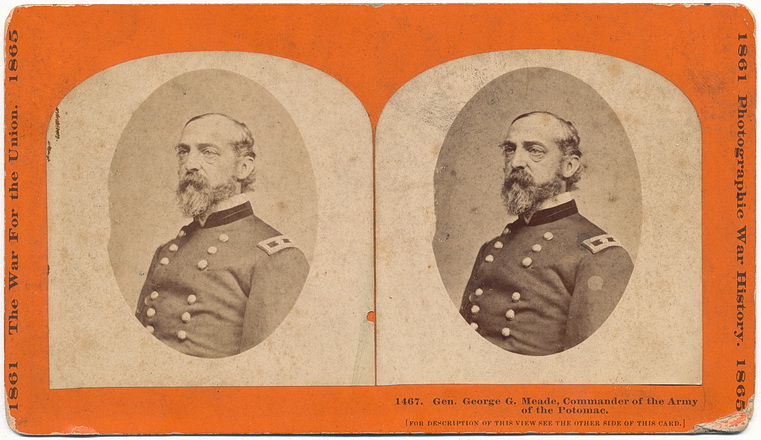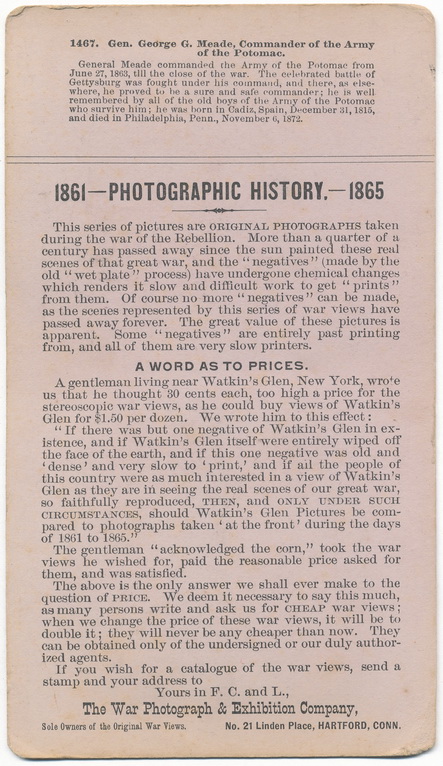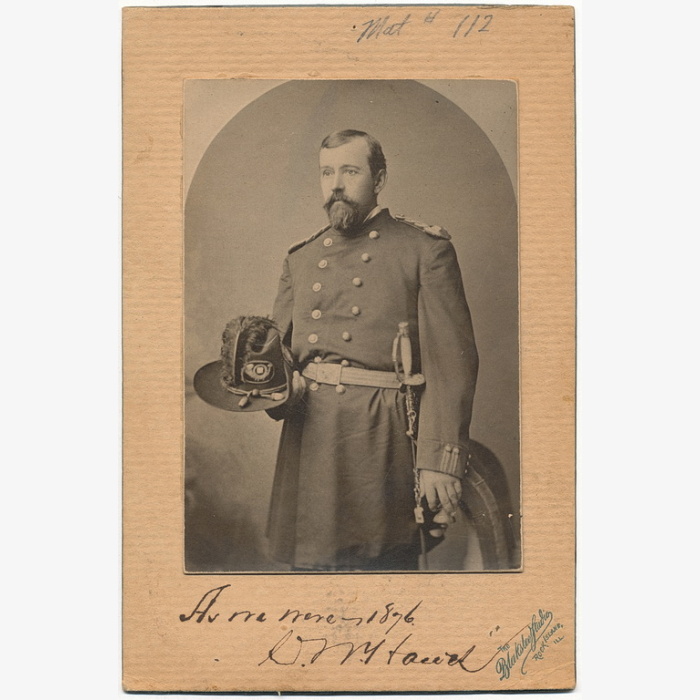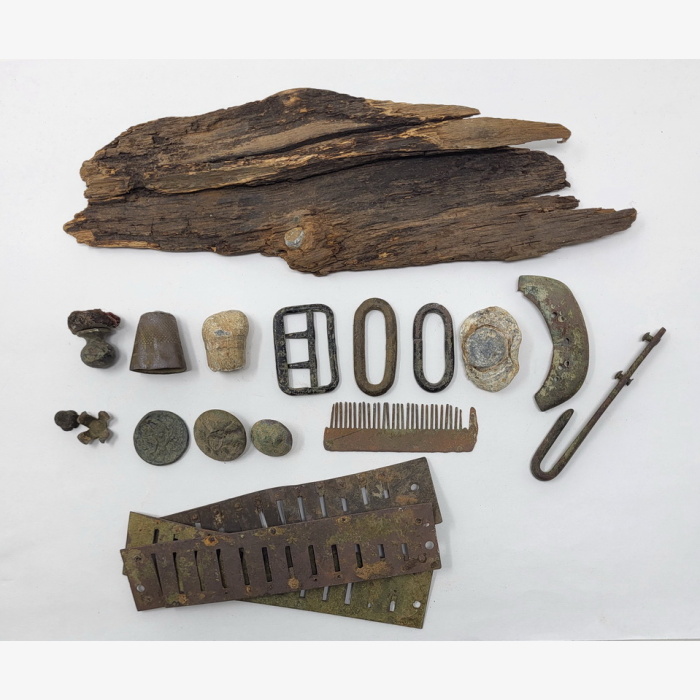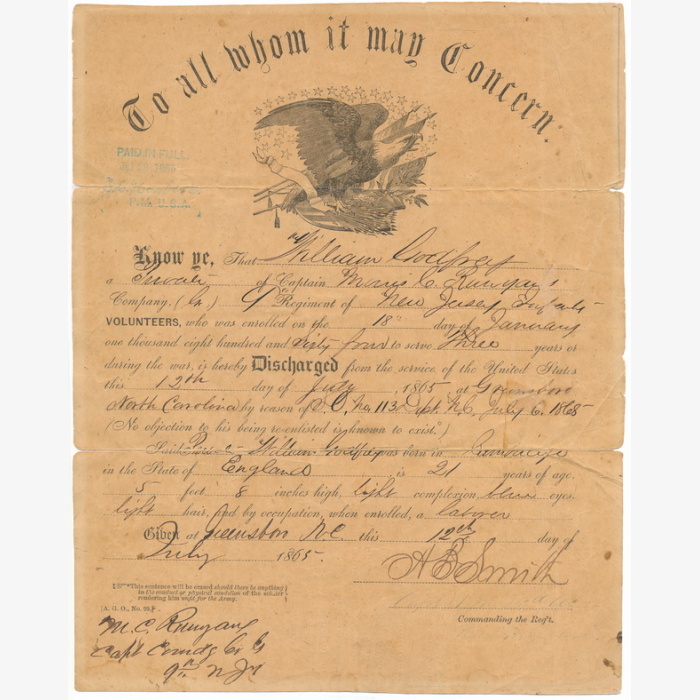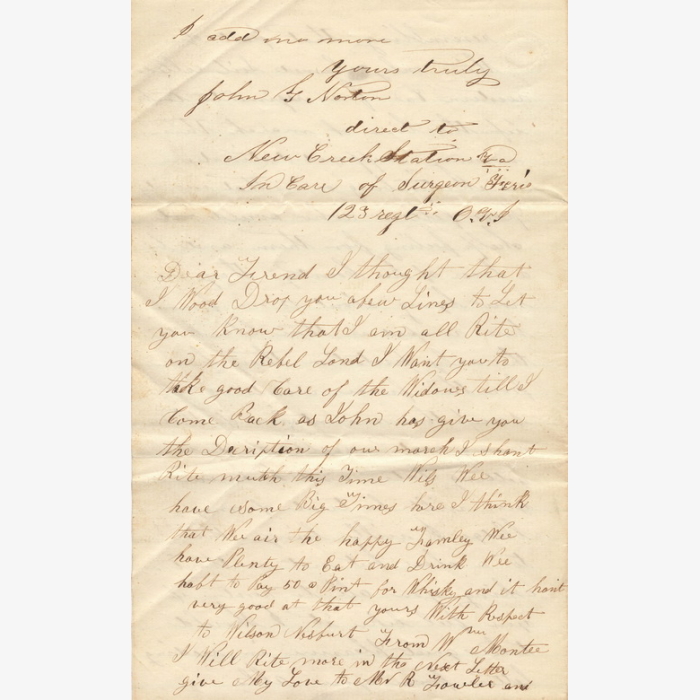Description
Stereoview of the ole “Snapping Turtle” himself, General George Meade. Meade’s Civil War combat experience started as a brigade commander in the Peninsula Campaign and the Seven Days Battles. He was severely wounded while leading his brigade at the Battle of Glendale. As a division commander, he had notable success at the Battle of South Mountain and assumed temporary corps command at the Battle of Antietam. Meade’s division was arguably the most successful of any at the Battle of Fredericksburg in December. It was part of a force charged with driving the Confederate troops under Stonewall Jackson back from their position on Prospect Hill. The division made it further than any other, but was forced to turn back due to a lack of reinforcements. Meade was promoted to commander of the V Corps, which he led during the Battle of Chancellorsville. During the Gettysburg Campaign, he was appointed to command the Army of the Potomac just three days before the Battle of Gettysburg. Arriving on July 1, Meade organized his army to fight an effective defensive battle against Robert E. Lee, repelling a series of massive assaults over the next two days. This victory was marred by Meade’s ineffective pursuit during the retreat, allowing Lee and his army to escape. Meade suffered from intense political rivalries within the Army, notably with Major Gen. Daniel Sickles, who tried to discredit his role in the victory at Gettysburg. In 1864–65, Meade continued to command the Army of the Potomac through the Overland Campaign, the Richmond–Petersburg Campaign, and the Appomattox Campaign, but he was overshadowed by the direct supervision of the general-in-chief, Lt. Gen. Ulysses S. Grant, who accompanied him throughout these campaigns. Grant conducted most of the strategy during these campaigns, leaving Meade with significantly less influence than before. His image was harmed by his notoriously short temper and disdain for the press. After the war, he commanded several important departments during Reconstruction. Having long suffered from complications caused by his war wounds, Meade died on November 6, 1872 at the age of 56, still on active duty, following a battle with pneumonia.
